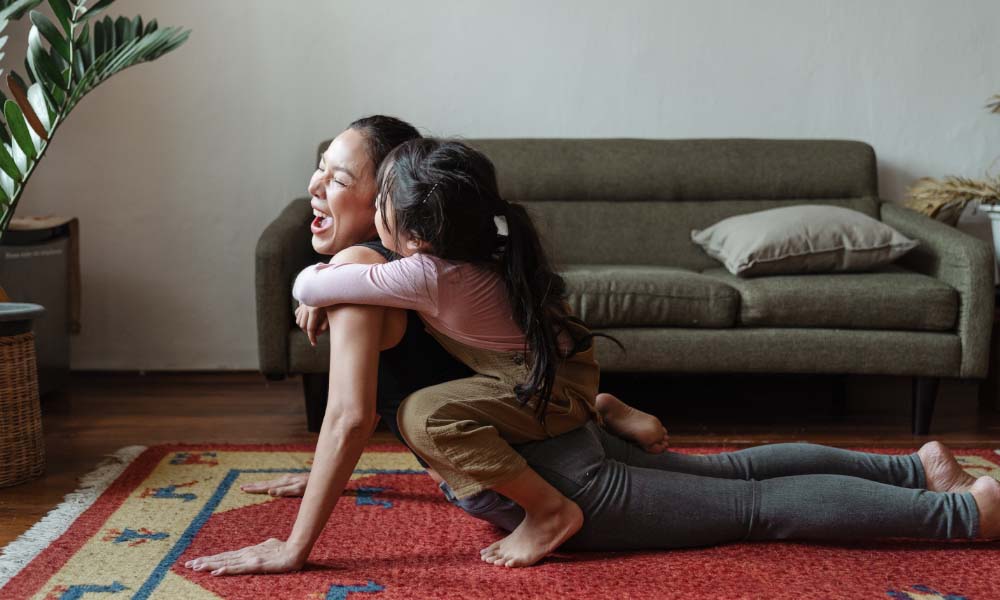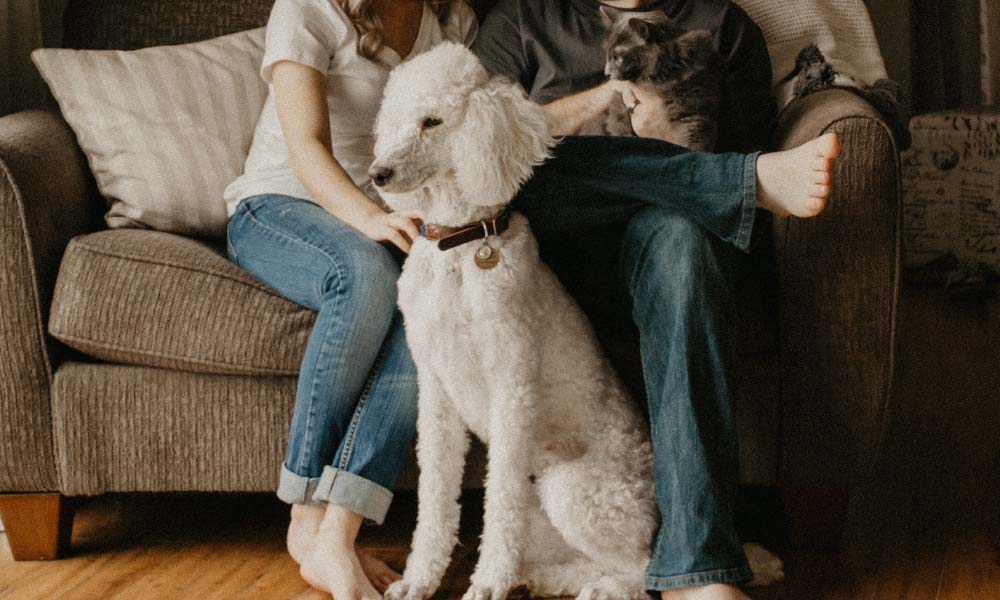“Throw your hands in the air and shout, ‘Wheee!’” my daughter exclaimed. I did as instructed.
"Do it again!” she urged and I obliged, pleased she was appreciating my acting skills, that is until she reached up and wiggled the skin hanging down from my biceps.
“Why is this so flippy and floppy?” she asked. Then she leaned over to her six-year-old brother and laughed, “Feel how flippy and floppy Mommy’s arms are!”
As both my children simultaneously assessed the floppiness of my arms, I was surprised at how their innocent words brought up such intensity of emotion in me. I wanted to slap their little hands away and defend my arm jiggle. To tell them that all considered I was looking good. In fact, for a 44-year-old mom who hadn’t exercised in two years due to chronic illness, I was looking awesome and was at my thinnest in a long time. But I knew none of that was the point and this was a real test, a defining moment in my life as a mom. So, I took a deep breath and thought about how to respond.
It’s hard to remember a day in my life when I haven’t thought about my body. A mind-body weather report goes off in the morning: “Today we expect mostly positive feelings with a chance of post-lunch negativity.” Or “A depressing low pressure system is circling off shore with chance of coming ashore and lingering all week.” Even as someone who considers themselves a staunch feminist and advocate of all bodies being beautiful, I had to work hard to find beauty and power in my own, to appreciate my thick thighs and wide hips for their power, to not wish away my freckles or my red hair, to not pine for lanky limbs, a little more height and always, always a few less pounds.
That there were years in my life when I barely ate and while I managed to leave that behind me, and more years that I ate well, but silently assessed every bit that went into my mouth.
When I had children, I wanted to do everything in my power to not pass that on to them. I wanted them to love their own bodies and appreciate the full range of beauty in others. I speak of their bodies not just for what they look like but for what they can do. I don’t tell them they can’t wear certain clothes even if they’re not flattering. Because I read all the stuff that says it’s not what we say as mothers, but what we do, I also swore I would never disparage my body in front of them, not even micro-aggressions like muttering an outfit makes me look fat, or that I "really shouldn’t be eating something.”
I’ve stuck to that hard core. But the moment my daughter reached up to wiggle my arm, I realized that there’s a HUGE difference between not saying negative things about your body and actually embracing the parts that aren’t always considered to be beautiful. I don’t want my children to see me loving my body in spite of my so called imperfections. In fact, the very idea of an imperfection is dependent on the existence of a perfect body. Why does underarm swing have to be a bad thing? A punchline about women and aging, a symbol of a female who has really let herself go?
So, I went with it, even when my daughter, pointed to one arm and said, “So, we’ll call this one Flip and the other one Flop!”
Even when she reached up to cradle Flip and asked, “So, tell me, how did you get so very flippy and floppy?”
“Well, I said. I used to have a lot of muscle but when I got sick a lot of that muscle disappeared and it left some loose skin behind.”
“How ‘bout you?” my son asked the other arm, eager to get in on the game.
“Hmm,” I said. “Well, I’ve always been a little flippy, most of us arms are.”
“Even when you were a baby?” my daughter asked.
“Even then,” I said, tickling her arms. “Maybe a little less floppy but I’ve always been a little loose. Even when I was very muscular if I was relaxed, I went right back to flippy.”
A few days later, my daughter and I were lying in bed when she pulled up my shirt and started drumming on my stomach and squeezing it.
“This is pretty squishy too.”
Again, I felt that instant reaction of hurt, of defense. I mean arms are one thing, but stomachs! As women, we’re basically brainwashed into learning how to make stomach fat disappear, from Spanx to creams to just sucking it in. Even after two cesarean sections, I was prone to standing sideways in a mirror to see how close to flat my stomach could be. But I fought hard to tamp it back down.
“Yup,” I said. “It’s a little squishy. Isn’t it lovely?”
Then I had an idea. I reached over to my bedside table and grabbed a pen, and began to draw on my belly. I made two round eyes above my belly button, and a curved mouth below. I grabbed my stomach together, wrinkling it into a face.
“Hello there, I’m squish-squish,” I said. “Very pleased to meet you.”
“Hi squish-squish,” my daughter laughed. “I’m Nora.”
“Nice to meet you Flora,” squish-squish said.
“It’s No-ra,” she said, laughing again. Then reached for the marker. “Can I do it too? Please?”
I handed her the marker and she proudly made a lopsided face around her own belly button and began to squeeze. “Hey squish. I’m little squish. Very nice to meet you.”
We sat in bed, two girls squeezing our bellies and laughing and I realized it was the first time in my life I’ve ever tried to make my belly bigger, to make my fat appear more than it was. But starting from flip to flop and now with squish-squish it felt like my imperfections were okay and most wonderful at all was my daughter squealing with delight at her own squish.
I’m not naïve. I know that moments like this won’t inure her against society’s pressure to look a certain way. She’s a carbon copy of me; she will never be a twig or one of the skinny girls. I can guarantee that at some point someone or something will make her doubt her beauty, her strength, or the raw power in her body, but before that I want to give her the tools and the foundation that might make her doubt that message more than she doubts herself. And to make that happen for our children, it’s not enough to avoid negativity, we need to embrace positivity with every cell in our bodies, squishy or otherwise. We need to play with the perfect imperfections we have, let our children see us interact with ourselves in a joyous way.
“Hey, do you know Flip and Flop,” she made her stomach said to mine.
“I sure do,” I answered in my best stomach voice. “We’re all part of one big club.”
“What club?” she asked.
“The Beautiful Squishy Flippity-Floppers,” I said.
“Can I join?”
“Of course you can.”
“Good,” she said. “Because I’m a little squishy too.”



